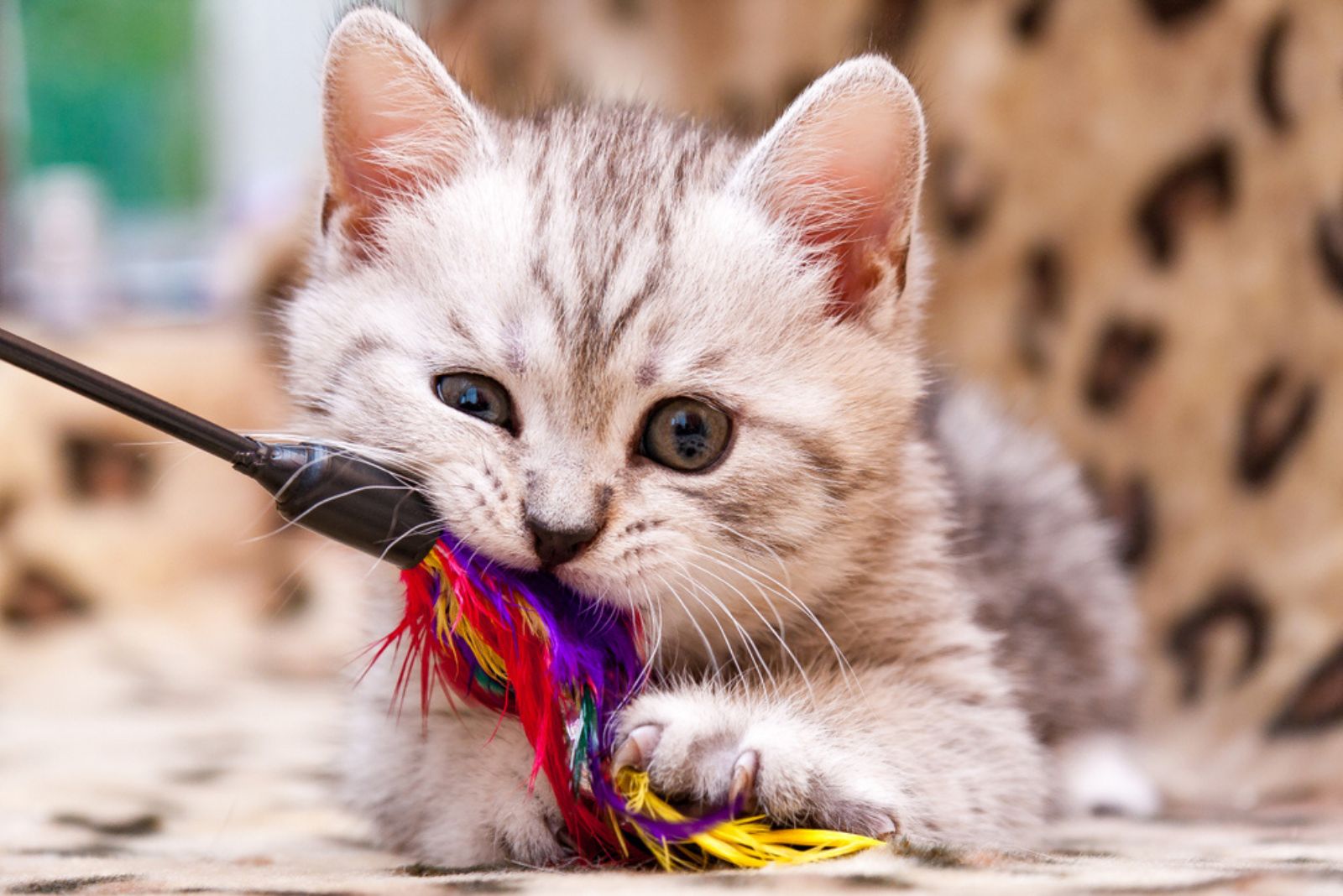Adopting a new kitty is a marvelous thing; you’ll definitely be a lot happier with them than without them. Kittens are great, but they do require a certain amount of effort, care, time, and money.
You might feel a little overwhelmed by all the things you have to do or buy before you welcome your furry friend into your home.
You will have to invest a certain amount of effort, time, and money, but what’s that compared to all the love that will fill your heart? (Awww!)
When bringing a new kitten home, there are a few things you need to consider, and then a few more that need to be done! But don’t worry, I’ve summed up the new kitten checklist to make it simple for you.
What your kitten needs is one scroll away, so read on and take notes.
1. Cat Carrier
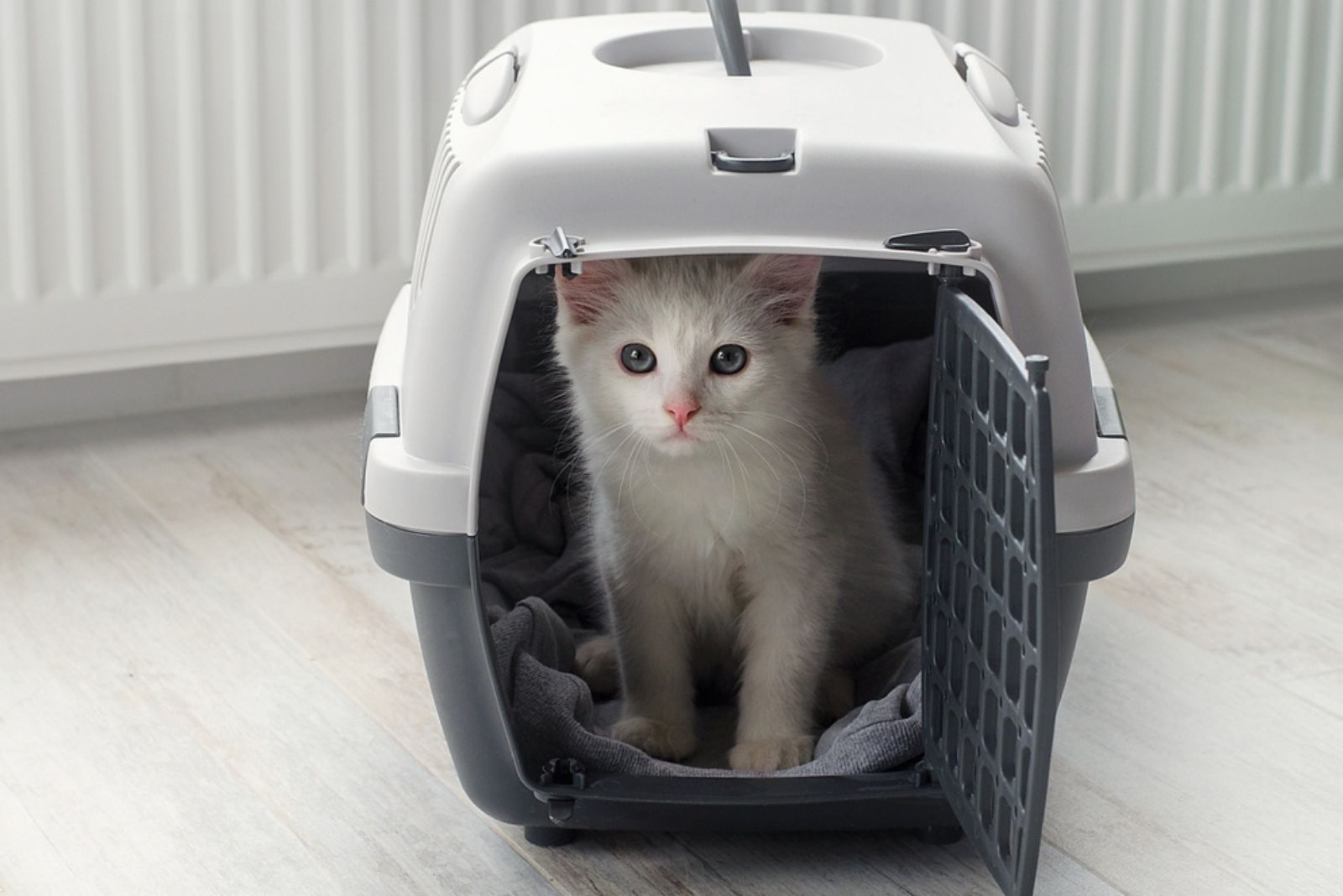
A cat carrier, also known as a travel carrier, is something you should always have on hand because there are several occasions when you might need it during your cat’s life.
It is also necessary for transporting your new kitten from the breeder or adoption center to its new furever home.
Travel carriers are used to bring your kitten to the veterinary clinic, possible play dates, and, if required, to the professional groomer.
You’ll want a crate that’s sturdy and gives your cat enough room to turn around but not so much space that they’re tempted to make it dirty. Cats are less likely to dirty the place in which they are sitting.
There are two basic distinctions when it comes to pet carriers: the soft-sided and the hard-sided. I like both of these, so it’s really a matter of personal choice.
2. Kitten Food
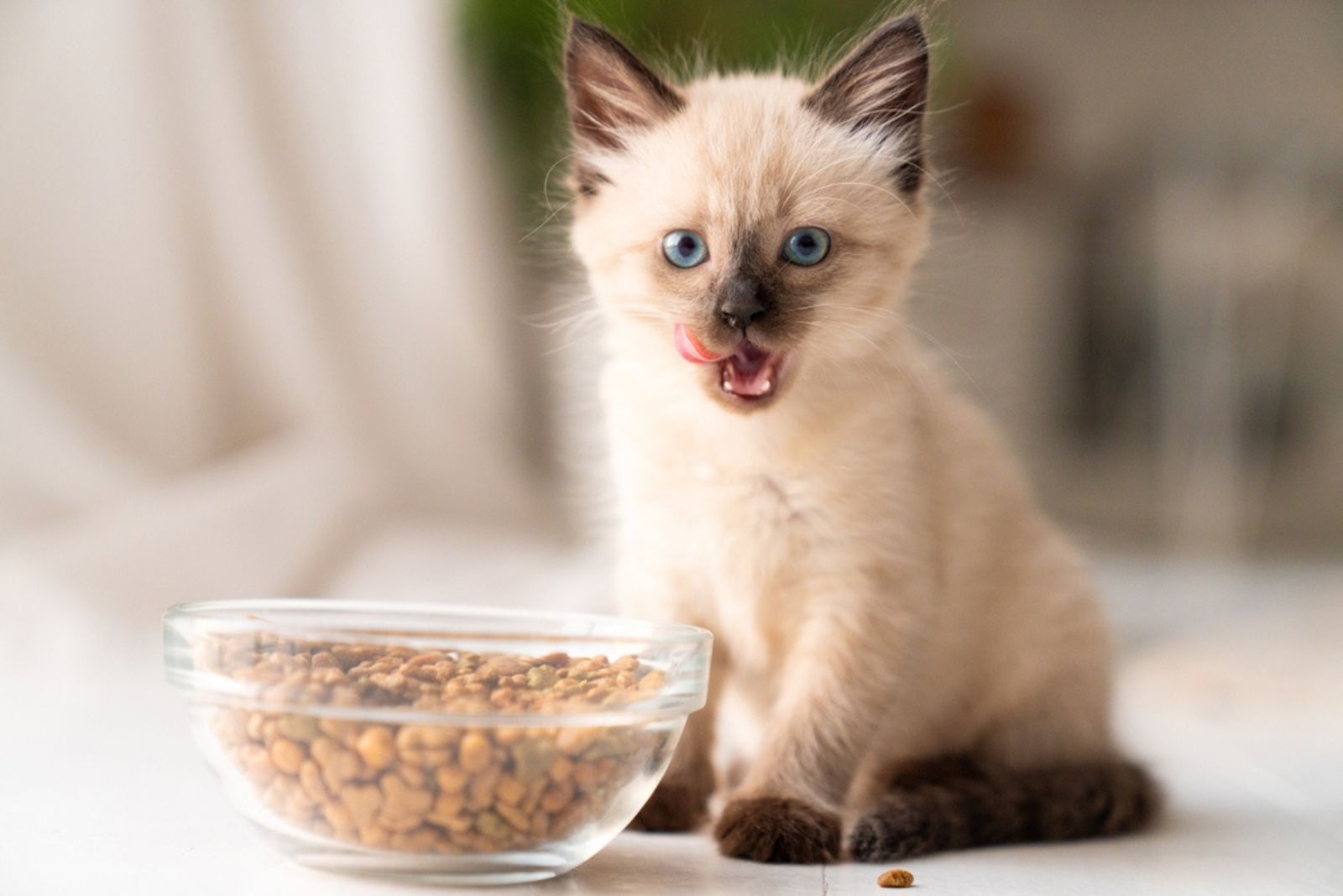
A kitten’s dietary needs are very different to those of adult cats. This includes an increase in protein, vitamins, lipids, and minerals.
Pet food is a fairly contentious subject among owners, as many people have strong feelings about what is best for their cat. Always remember that food labels are there for a reason, so they should be read!
Kitten food is, logically, for kittens, so at the beginning, you’ll need to buy it. Always opt for meat-based and grain-free foods since cats are obligate carnivores which means they need proteins from meat.
The best thing to do is establish a diet plan with your vet and talk to them about anything that you need.
3. Cat Bed
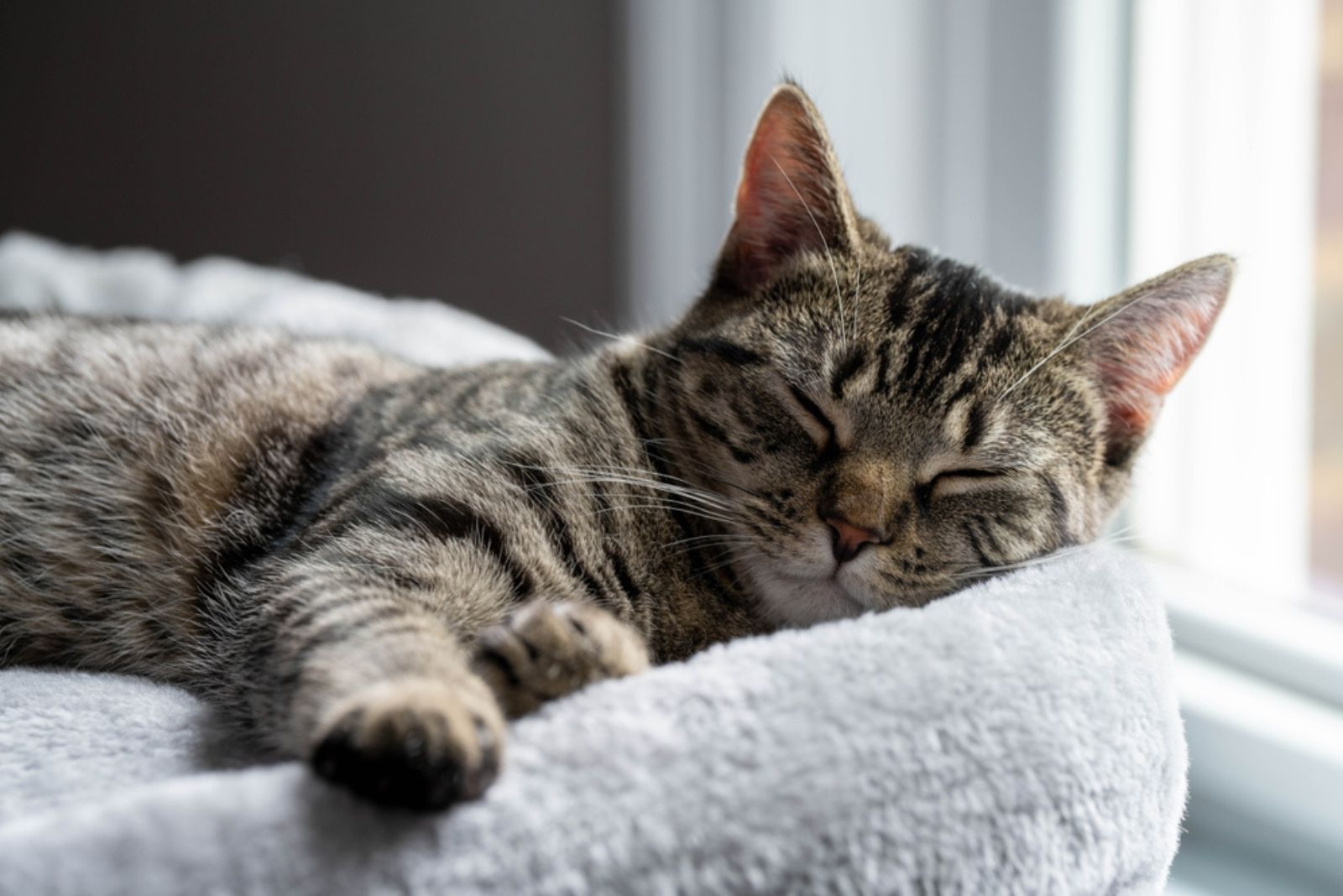
Your kitten still has a lot of growing to do. You can start with a small bed that your kitty will feel secure in but ultimately grow out of, or choose a bed designed for adult cats.
When selecting a larger bed (which will also be suitable for your adult cat), add a roll of blankets to make the bed feel more contained, snug, and safe.
The goal is to make the bed an attractive, secure place for your kitten. This will also keep your cat away from places where you don’t want it to sleep, e.g. clean laundry just out of the dryer!
There are other factors to consider when picking out a cat bed: like can it be washed, or does it have heating abilities? You should wash your cat’s bed regularly to prevent the spread of odors and bacteria.
The easiest beds to clean are those that have removable covers. Some cat beds may also have a heating function, which can work by either plugging the bed in, heating it in a microwave, or using special material that traps the cat’s own body heat.
4. Food And Water Dishes

When purchasing kitten food and water bowls, look for stainless steel or ceramic. Plastic dishes are quite inexpensive but they can cause feline chin acne due to an allergic response to chemicals within the bowl.
You should clean your kitten’s dishes regularly. Dry food dishes may be washed and cleaned in the dishwasher every couple of days. Wet food bowls need to be cleaned on a daily basis.
Even if your cat has licked the bowl clean, both wet and dry cat food leave some residue. This is because most cat foods have a high fat content.
5. Cat Litter And Litter Box
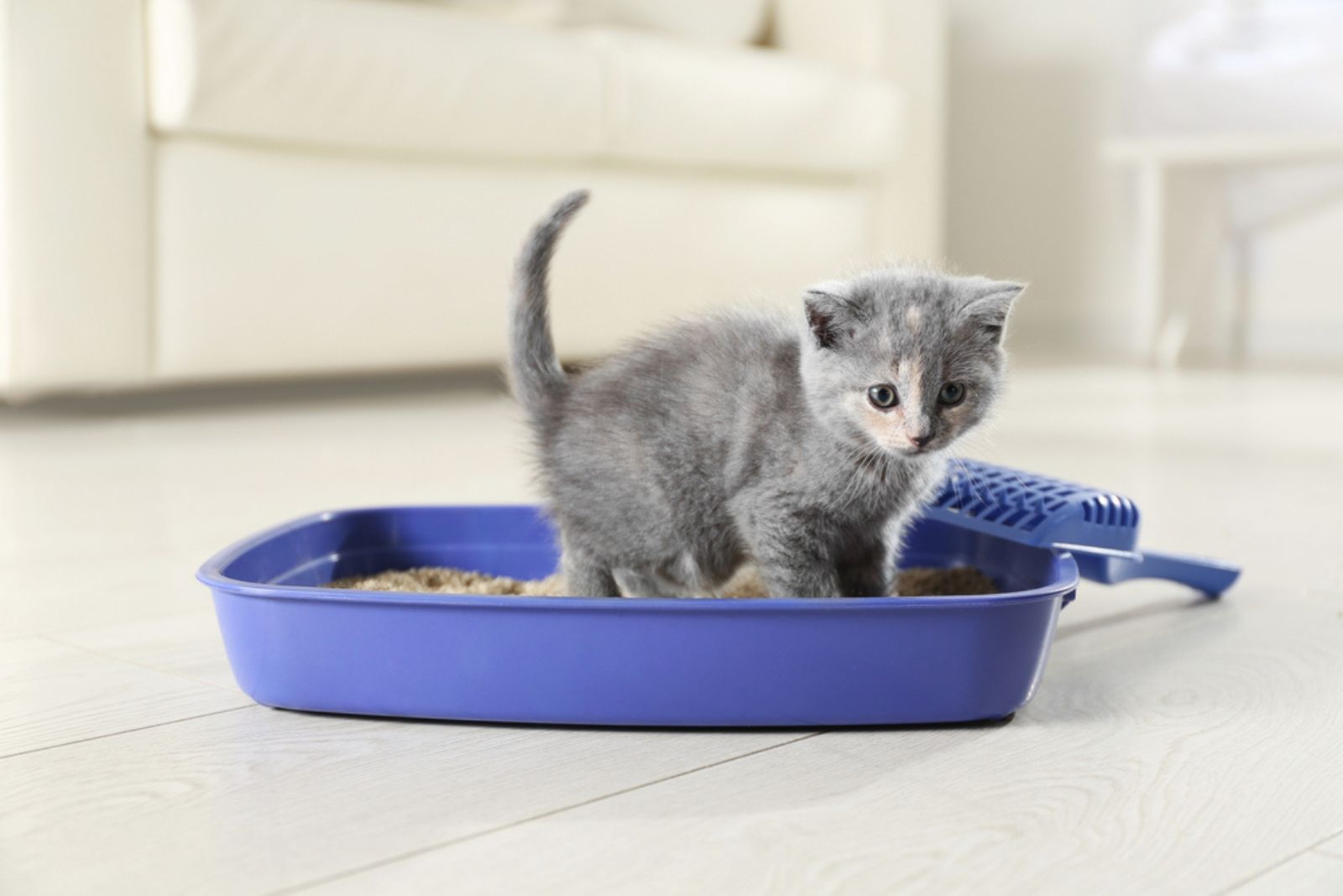
Litter boxes may not be the most fun item on your shopping list, but they are essential for kittens. You’ll need to introduce your kitten to a shallow pan since they’ll have trouble climbing over the higher sides of many litter boxes offered at pet stores.
You’ll also have to find a safe, effective kitten litter to use. Clumping litters should be avoided until your cat is older since they might create blockages if consumed.
Until your kitten gets older, it is recommended to use either a non-clumping type of cat litter or some type of pellets.
To repeat, for the first time you’ll need: a litter box, kitten’s first litter, litter scoop, and litter pan. Additionally: deodorizers and litter liners.
Kittens, unlike puppies, almost toilet-train themselves. That’s fantastic news! Kittens intuitively grasp the notion of the litter box because they prefer exactly this type of material to “do their business”.
When your kitten is around three weeks old, you may begin introducing them to the litter box. This is the point at which kittens no longer require stimulation to go to the potty. Until this stage, they need the mother cat to lick them to encourage them to eliminate waste.
Put the litter box in the corner of your cat’s area and clean it at least once during the day. Then, every time your cat uses their litter box, lavishly praise them in order to reinforce the positive habit.
You’ll be astonished at how easy it is to persuade your kitten to use the litter box!
6. Cat Toys
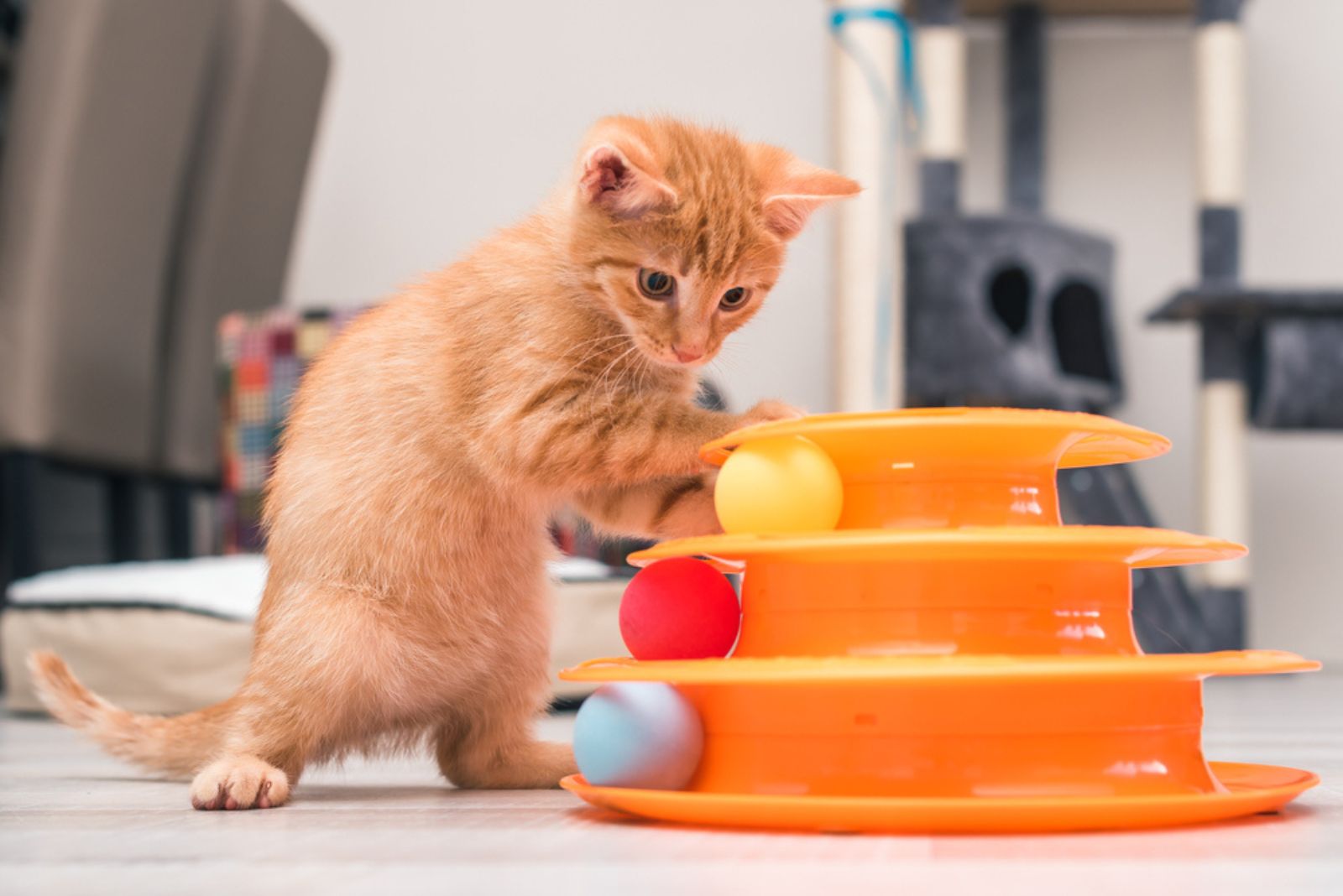
It is critical to keep your kitten engaged while you are away in order to keep it calm and stop it from experiencing boredom or separation anxiety. To keep cats amused, utilize automated cat toys, interactive toys, and puzzles.
It’s critical to rotate your kitten’s toys to maintain their interest and keep them entertained. Cat subscription boxes have also become highly popular as the pet care business has grown.
7. Cat Trees & Scratching Posts

Scratching posts and climbing platforms will keep your cat engaged, amused, and fit (and hopefully they will be a better target for those claws than your furniture).
You might feel your cat is simply being naughty when they scratch your new chair, but scratching benefits kittens in several ways; they’re either stretching their entire body, or keeping their claws healthy by removing the outer layer of the nail.
Scent glands in the cat’s paws allow them to communicate with other cats in the house. Provide your kitten with a cat tree, scratching post, or cat scratching pad (or all of the above!), to keep them busy and keep your belongings safe.
8. Cat Collar

Cat collars with bells are a great way to keep an eye on your kitty while they explore their new surroundings (and provide a warning to any birds they may try to chase).Just make sure that any collar you purchase has a safety breakaway clasp.
Kittens jump and climb when playing, and you don’t want your kitten’s collar to get stuck on something.
Remember to check the collar’s fit on a regular basis. Kittens grow quickly, and you don’t want their collar to get too small and hurt them.
9. Cat Treats
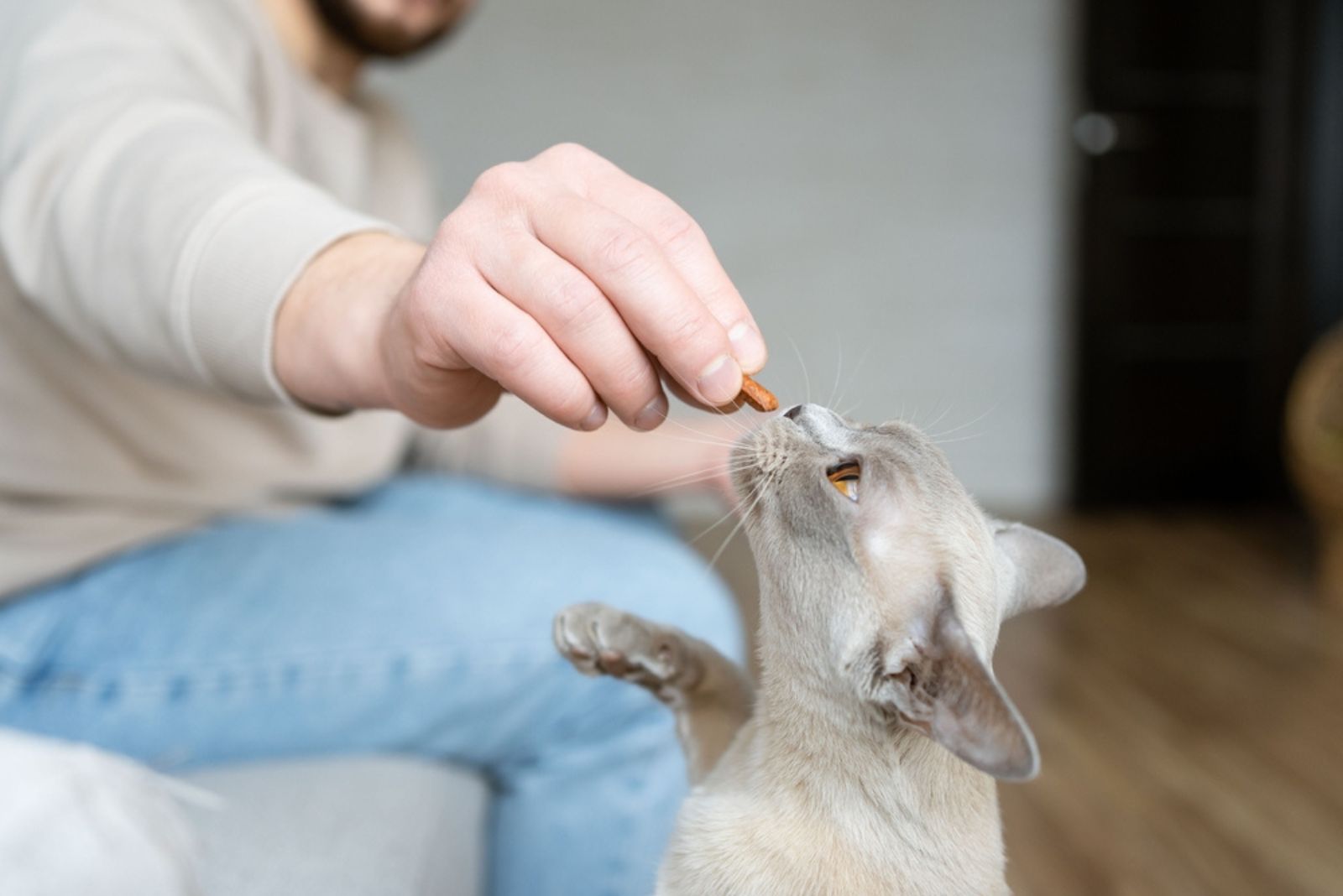
Treats are an enjoyable way to both reward and bond with your kitty. Just like human treats, if too many are eaten, it can create health problems.
When selecting snacks and treats, bear in mind that your cat should not consume more than 10% of its daily calorie intake from treats. This equates to 20-25 calories of treats each day for a 10-pound cat.
Consider how little your kitten is… Your kitty requires even fewer calories from its daily snacks.
Look for completely cooked, low-calorie snacks that will be healthy and tasty. Sweet foods should be avoided; cats do not need sweet foods, and in fact, they cannot even taste sweet flavors, so this is just empty calories that they cannot even appreciate!.
As your kitten ages, you can consider catnip as a great low-calorie and eco-friendly alternative to other already available cat treats.
10. ID Tag
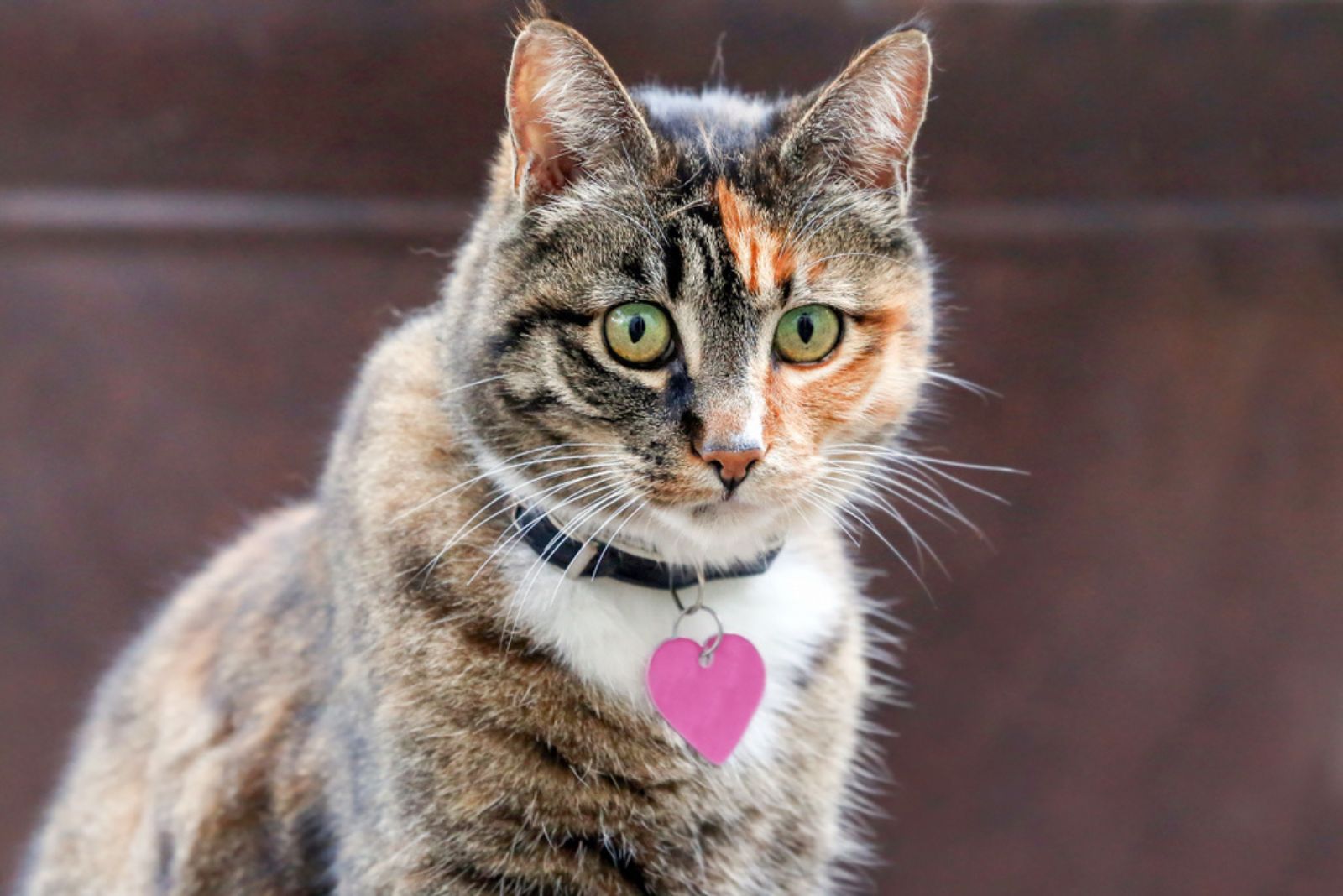
If your kitten tries to slip out the door, make sure you have everything ready, so you have the best chance of catching it. You should get a microchip for your new cat as soon as possible.
Having an ID tag on your kitten, on the other hand, makes it quick and easy to recognize them. We recommend that you label your cat as an indoor cat, either separately from the label with your contact information or on the back of it.
Cats are commonly seen wandering around with or without collars, and people are used to that. Attaching the “I’m an indoor cat” tag will get the attention of someone who might otherwise ignore your lost kitten.
Kitten ID tags must include the following information: your cat’s name, your name, your phone number, and your address.
11. Brush, Toothbrush, Comb
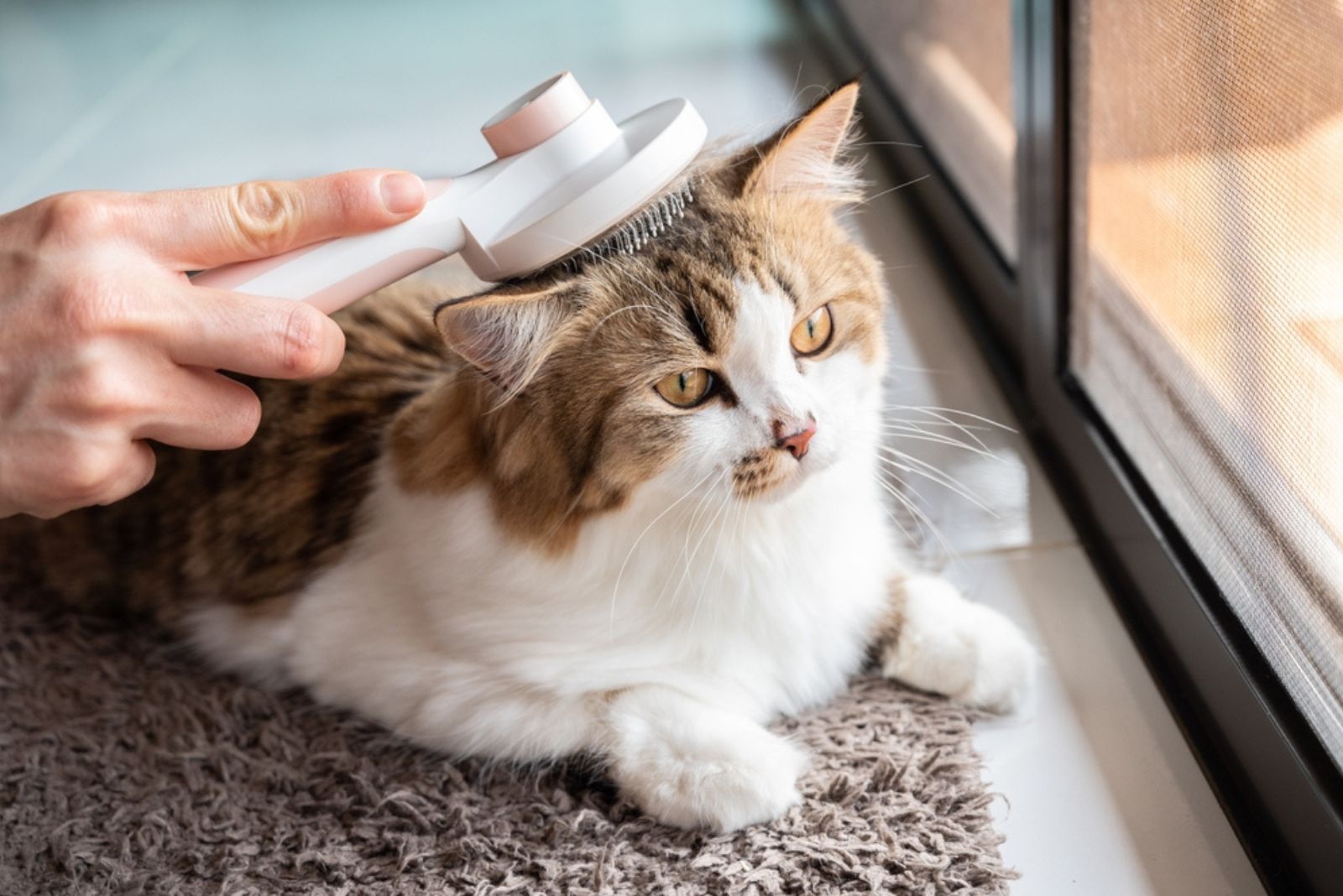
Having a flea comb and a normal cleaning/grooming brush on hand will motivate you to groom your kitten on a regular basis. This will be good for both of you by providing you time to bond, allowing you to check for pests, and getting your kitten used to further handling.
Long-haired cats and kittens require daily grooming in short bursts. Cats with short hair may get away with only one grooming appointment every week.
12. Nail Clippers And Nail Trimmers
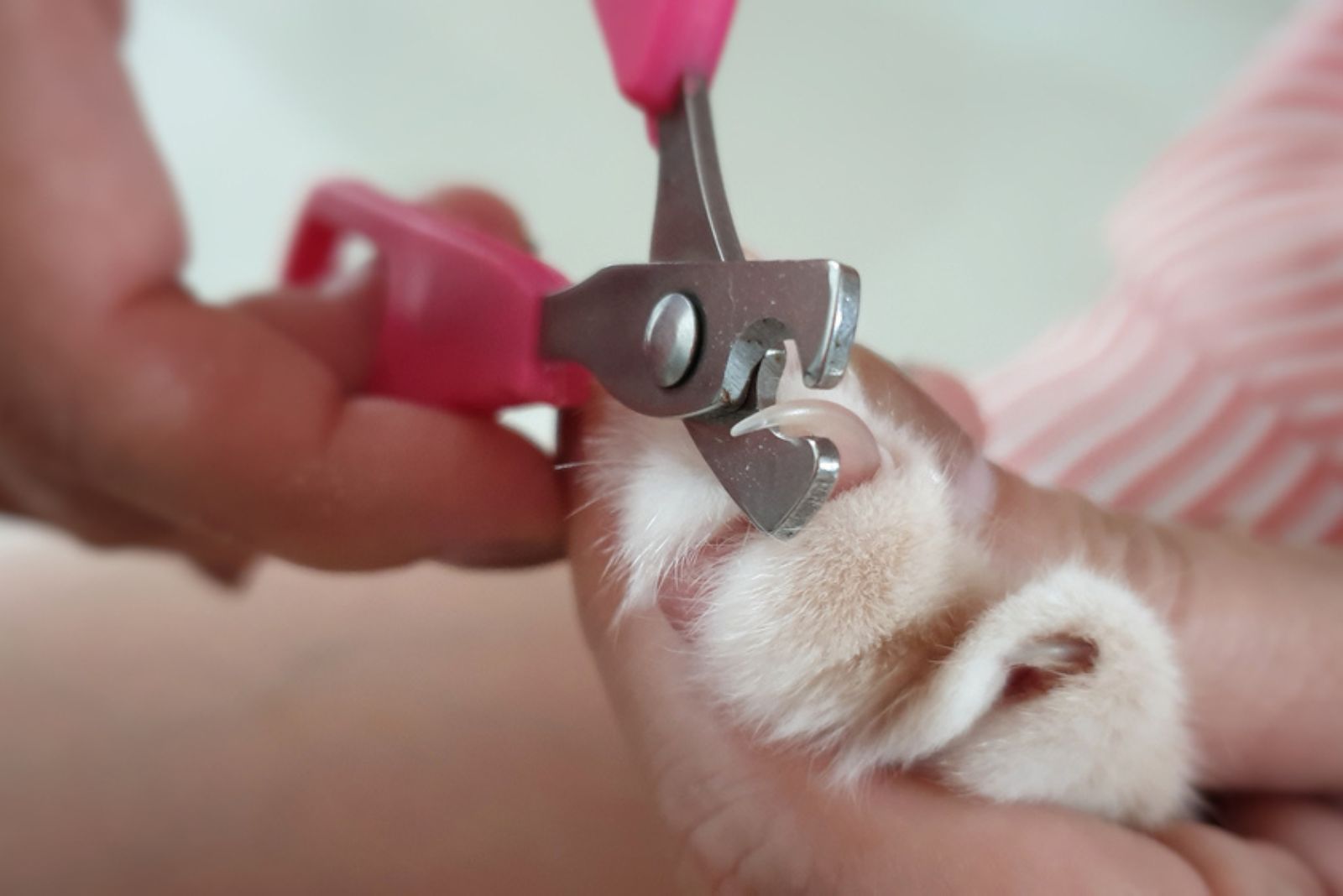
Keeping your kitten’s nails trimmed can help stop it clawing up the carpet and furnishings. It will also prevent your kitty from scratching you while playing.
While your kitten’s claws will be small until she is older, it is preferable to start nail cutting at a young age. It’s better to learn how to do this at home because taking your cat to the vet for nail trims might be traumatic.
If you want to trim your cat’s nails on a frequent basis, we recommend buying a good set of quality nail clippers that can cut through stronger adult cat nails more easily. Another possible option are cat and kitten nail caps.
13. First Year Veterinary Care
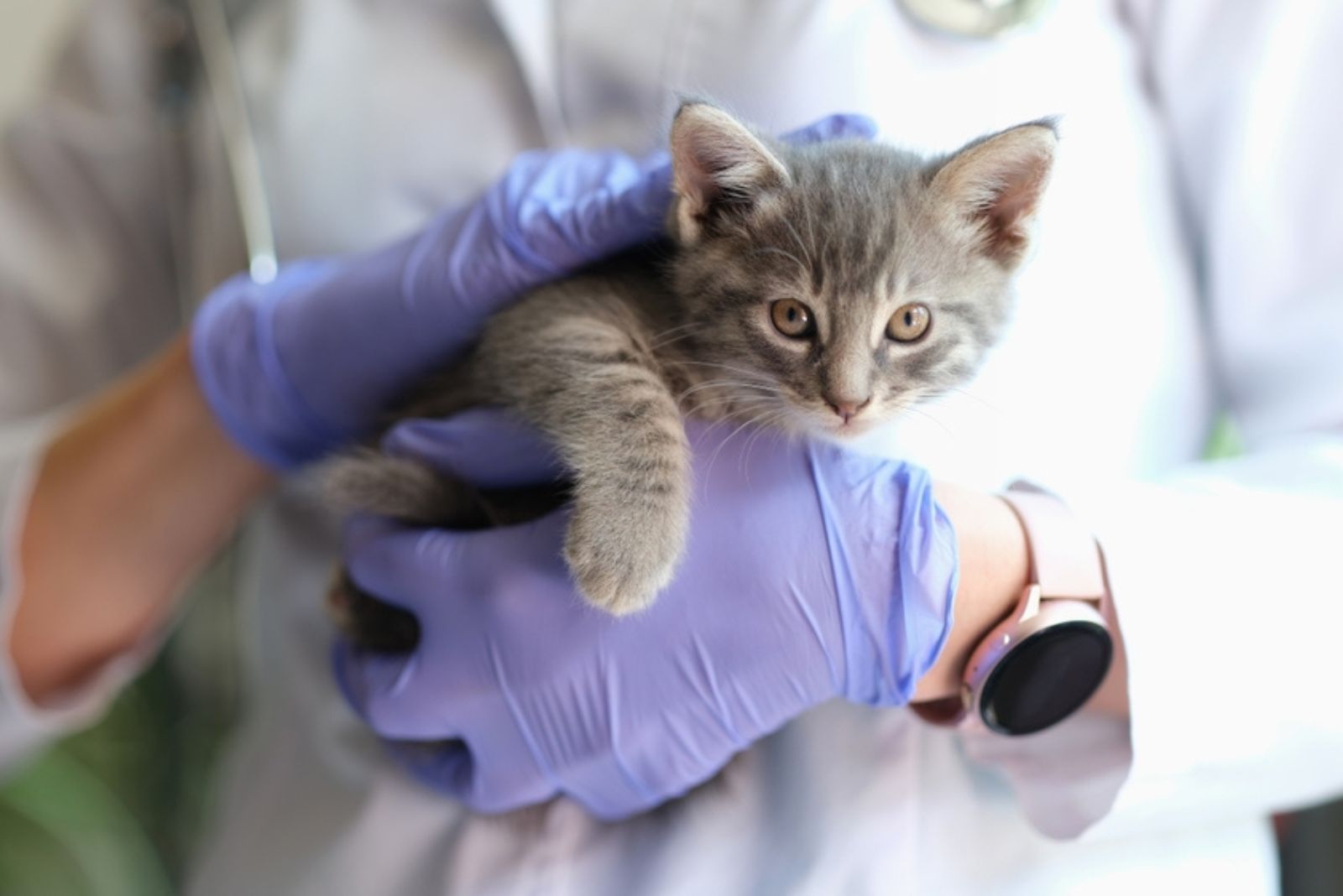
Begin your kitten’s life on the right foot by ensuring that all medical milestones are met with early veterinarian treatment. You should also consider purchasing pet insurance so you don’t have to worry about any urgent and unexpected vet visits in the future.
You’ll want to address any health issues you’ve discovered in your cat; your cat’s wellness and health are the most important things!
Vaccinations, flea and heartworm prevention, and getting your kitten neutered/spayed are all part of the first year of veterinary check-ups.

